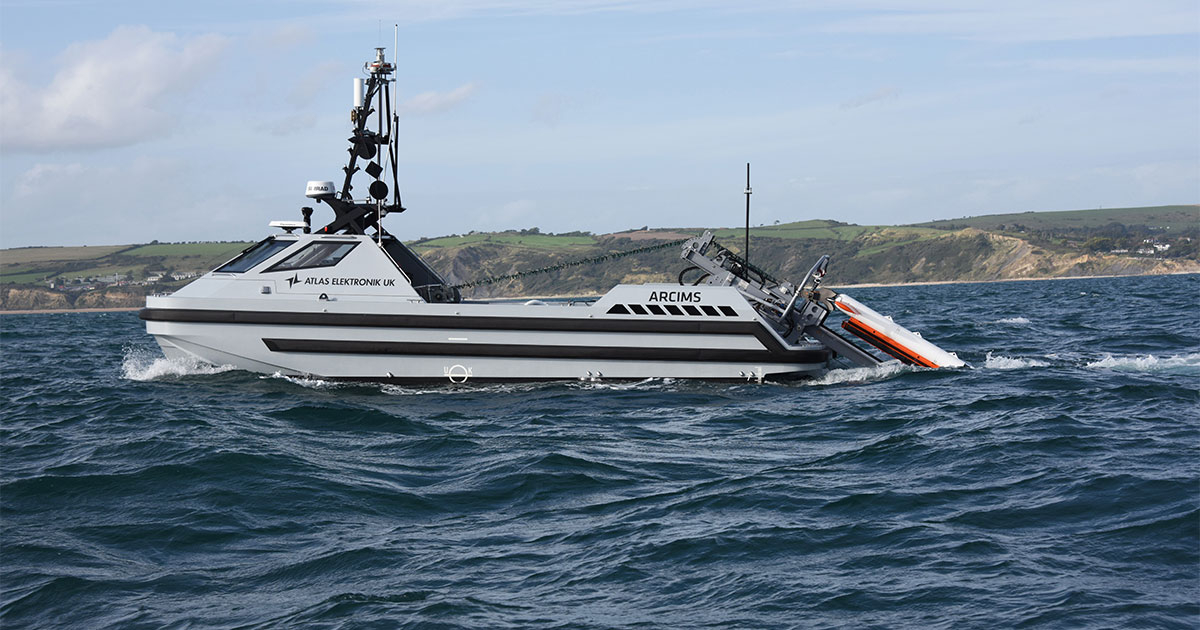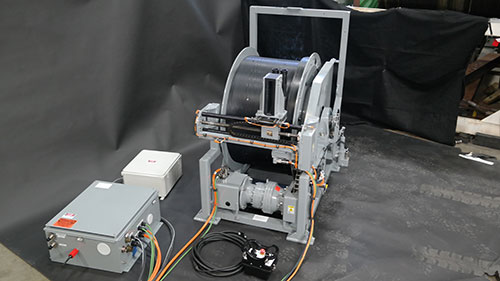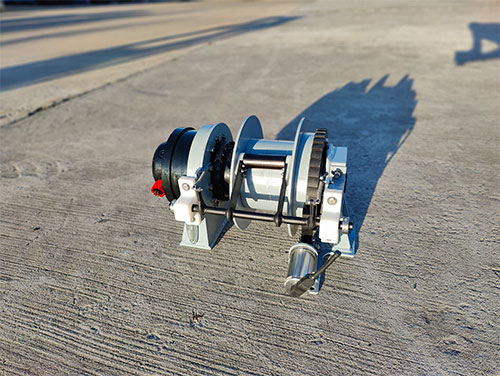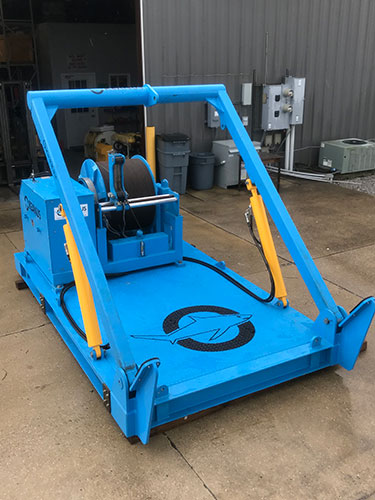


Recent advances in ocean technology have elevated the role and potential of uncrewed systems across a range of marine industries, with artificial intelligence (AI) as the great enabler. In an increasingly connected world, in which information and communication technologies (ICT) are bolstered by an expanding Internet of Things (IoT), the ocean sector is fast approaching the realm of autonomy. However, any suggestion that, before long, conventional at-sea operations will be fully governed by an ecosystem of self-governing robots is somewhat misguided.
More accurately, we have set a sure path to a systematic integration of synchronized uncrewed assets, operating on and below the waterline with varying degrees of automation. The need to safely launch and recover these systems will not, initially at least, remove the need for some form of conventional topside support. But as we begin to scale up the endurance and utility of uncrewed vehicles, operators will be able to significantly reduce the headcount needed at sea to execute operations.
Today, rather than mobilize fully crewed vessels for the full duration of a predetermined mission, the tech exists to remotely control uncrewed assets from a shore-based command. With ease of deployment being one of the foremost considerations in an uncrewed vehicle’s form, fit and function, ocean technologists are developing uncrewed surface vehicles (USV) and autonomous underwater vehicles (AUV) that favor a “deploy and leave” approach to longer assignments. The vehicle can then be supervised remotely, as appropriate.

An Okeanus MCM-015 winch to be used aboard MCM-USV with NGC AQS-24 mine hunting unit.
The objective of such an approach, below the water at least, is subsea residency, whereby inspection, monitoring, and repair (IMR) assets are primed to “reside” at a target site for months—perhaps even years—before needing to be recovered for servicing. Powered by rechargeable subsea batteries and housed in seafloor docking stations, vehicle tasks are programmed and monitored by skilled remote operators.
The seamless synchronization and expanding service of these robotic systems, like most pioneering technologies, will hinge on interdependent breakthroughs in both software and hardware. Among other technical areas, the growing application of uncrewed assets in offshore environments will be tempered by the evolution of robust, reliable, and increasingly intelligent deployment equipment—both on-deck and subsea. These hardware systems—winches, LARS, A-Frames, cranes, etc.—are instrumental both to deploy/recover the vehicles safely and to enhance the vehicles’ capabilities in the field, e.g., by incorporating a remotely operable winch into a USV’s payload.
Our collective drive to explore new frontiers remotely is challenging leading manufacturers of deck handling equipment like Okeanus to focus on novel designs and creative fabrication methods, as well as to expand access to specialized materials, advanced control systems, and innovative designs to offer fully customized turnkey solutions. Specific in-field requirements, environmental conditions, mounting location, and length of deployment have made material selection—and its anticorrosive properties—a key design parameter.

An Okeanus 1,500 m depth rated, 500 kg safe working load, underwater mooring winch custom designed for integration within a large displacement UUV. (Image credit: Okeanus)
Take seabed winch systems, for example. These may be anchored in shallow water, mid-ocean water column, or to the seabed at depths of 6,000 meters. These are very distinct marine environments, so naturally, specifications vary. These winches can perform their tasks either autonomously (pre-programmed profiling schedule) or remotely from a comms cable. They can be designed to support long- or short-term deployments. In other words, one size seldom fits all.
At Okeanus, not only are we seeing a surge in demand for specialist deck handling equipment to launch and recover USVs and AUVs, but also to directly enhance the capacity of a USV by incorporating an automated LARS/winch to deploy additional intervention tools and survey payloads—in short, to make the USV more autonomous. In this case, a USV’s weight must determine the right balance between mission resources (power source, sensor suite, tooling) and vessel requirements in higher sea states, and so places heightened scrutiny on any mechanical components used for this additional launch and recovery hardware.
The use of autonomous winches on USVs places increasing scrutiny on failproof communication networks for both executing tasks and real-time data transfer. The product architecture of any USV-supported winch should always prioritize single-point failure and failsafe modes—if a system fails, which can never be ruled out when working in unpredictable marine conditions, it is essential that it fails safely.
This highly custom design process—from concept through to delivery—can only be effective by partnering with clients early and ongoing to identify their emerging needs in the field and, following extensive testing and evaluation, introducing incremental changes to either our existing winch portfolio or a customer’s blueprints. This is what we do in our cutting-edge engineering facility in Houston, TX, and our approach to custom subsea engineering solutions has proven to be a differentiator when working with developers of unmanned vehicles and systems.

Okeanus standard SMA-40 LARS. (Image credit: Okeanus)
One such client, a multinational aerospace and defense technology company, we partnered with to further develop the Okeanus MCM-015 winch for their latest mine hunting unit. Naval forces across the world are directing increasing resources and funding into developing autonomous programs, especially for mine hunting and mine neutralization operations. Therefore, it was essential that this particular winch incorporated a number of bespoke features designed for very specific asset deployment and recovery. It is this level of collaboration and trust that has enabled us to foster long-standing relationships with defense innovators to deliver truly fit-for-purpose solutions.
This feature appeared in ON&T Magazine’s 2023 December special edition: The Future of Ocean Technology, Vol. 4, to read more access the magazine here.


255 Equity Blvd.
Houma, LA 70360, USA
+1 985.346.4666
11989-A FM 529
Houston, TX 77041, USA
+1 713.460.1400